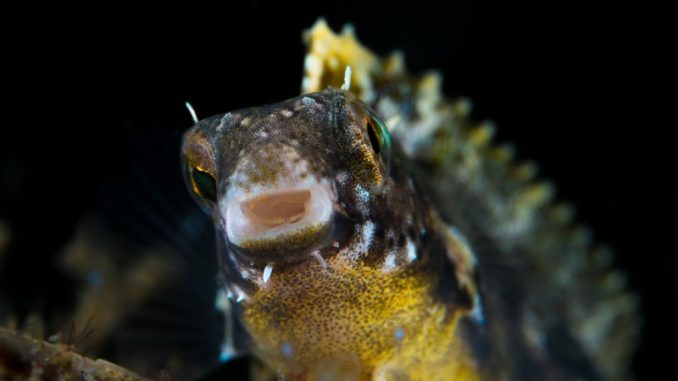
The Dragon Goby is just one of many different species of gobies. These are spiny-finned fish belonging to the Gobiidae family.
These small, meat-eating fish are found all over the world but are especially prevalent in tropical waters.
This article will tell you everything that you need to know when keeping the Dragon Goby in your aquarium at home.
TABLE OF CONTENTS
Dragon Goby Facts & Overview
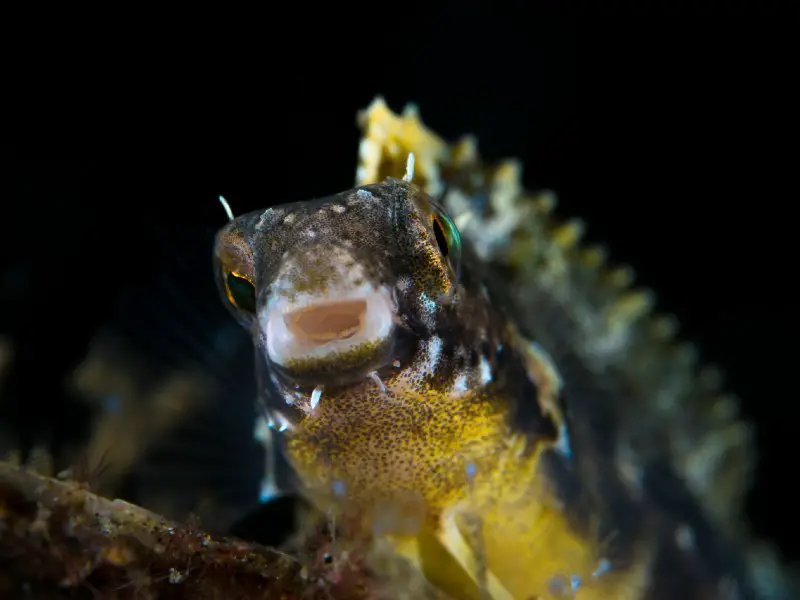
| Category | Rating |
| Care Level: | Intermediate |
| Temperament: | Aggressive |
| Color Form: | Violet and gold |
| Lifespan: | Up to 10 years |
| Size: | Up to 24 inches |
| Diet: | Omnivorous |
| Family: | Gobiidae |
| Minimum Tank Size: | 30 gallons |
| Tank Set-Up: | Brackish water with caves and logs |
| Compatibility: | Medium-sized, brackish water fish |
The Dragon Goby is also known as the Violet Goby because it has an attractive deep purple color. It is also sometimes called a Dragon Fish or a Dragon Eel.
The scientific name of the Dragon Goby is the Gobioides Broussonnetii. It belongs to the family known as Gobiidae.
The Dragon Goby is a brackish water fish. It needs water that has some saline content, but should not be as salty as seawater. They are native to the brackish waters of the Atlantic Ocean along the coastline of North America and South America.
A beginner aquarist just starting out on his hobby of keeping fish in a home aquarium might find it somewhat challenging to keep a Dragon Goby, as they do require a certain amount of specialized care.
The Dragon Goby is an aggressive species that can react viciously to other specimens in the tank, so it is important to know how to care for this fish and how to set up its tank.
Possibly because the Dragon Goby requires a fair amount of attention, it is not a hugely popular fish for the home aquarium. However, for experienced aquarists, it is a good choice and is available from most aquarium supply stores.
Expect to pay between $10 – $15 for a healthy Dragon Goby. It is always recommended to buy from a reputable store, in order to be assured that the fish that you put in your tank is free of disease.
A healthy dragon Goby can be expected to live for up to 10 years in the right conditions.
Typical Behavior
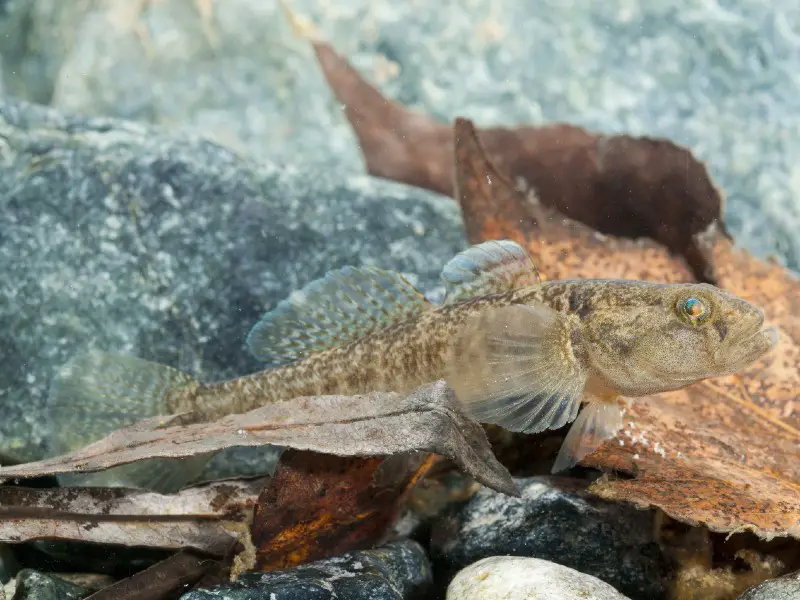
The Dragon Goby displays highly aggressive tendencies in certain circumstances. As a result, it is often labeled as an aggressive fish. However, this is not necessarily accurate.
It looks extremely fierce, as it has a big mouth and many sharp teeth. However, it is a predator scavenger. As long as it is fed regularly, it will not try to eat other smaller fish.
The Dragon Goby does not have a good vision. Therefore it is often victimized by other bigger fish that knows its weakness and inability to defend itself if taken by surprise.
Appearance
The Dragon Goby is generally considered to be a very pretty fish. It looks a lot like an eel. It is long and thin, with a large, round, dome-shaped head.
Its eyes are very small in relation to the size of its head and are positioned on the sides of the head. This causes it to have poor eyesight.
The color of the Dragon Goby usually varies among different shades of lilac, violet, and purple. That is why it is also known as the Violet Goby. However, it also often has a golden tinge to its fins.
Initially, you may not be able to differentiate between the fins and the rest of the body of the Dragon Goby. Both the anal fins and the dorsal fins are visible when looking at the whole fish.
The ventral fins are easily visible behind the gills. These fins enable the Dragon Goby to hold onto rocks and move around the tank.
Dragon Gobies vary in size but can grow to be quite large. They are known to be one of the biggest species of gobies.
In its natural habitat, a Dragon Goby can grow to a length of up to 24 inches. When kept in captivity, its growth is restricted. It will usually not grow bigger than 15-16 inches when kept in a tank.
The Dragon Goby has a lot of extremely sharp teeth. This gives them a vicious appearance, but they usually only use these teeth for eating and scraping rocks for algae. They will seldom use their teeth to attack another fish.
A healthy Dragon Goby will be purple in color but will have a glowing, shimmery hue that gives it a golden tinge.
Male and female Dragon Gobies look almost exactly the same. The only way to differentiate between them is by examining the genital papilla. The males are long and tapered, whereas the females are not as long, and are a lot flatter.
Habitat and Tank Conditions
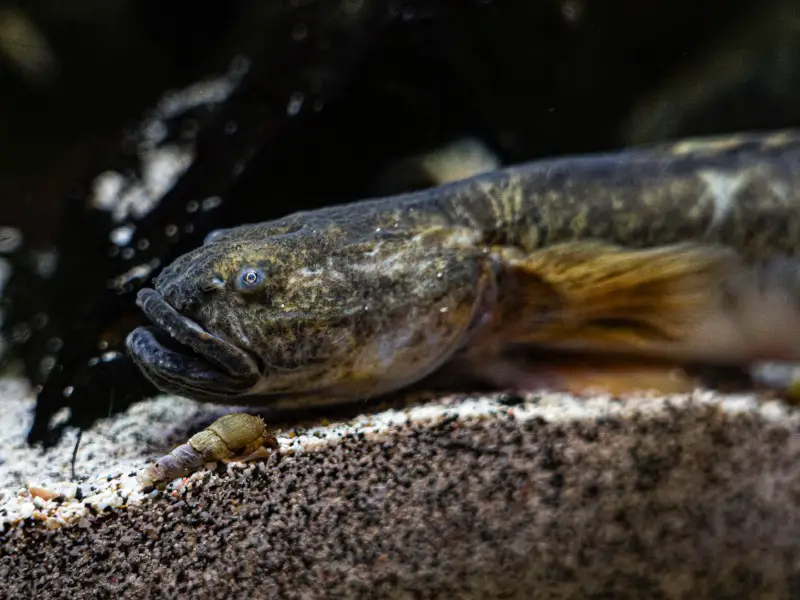
Despite the fact that the Dragon Goby was originally native to the areas along the Atlantic shoreline, it is now more commonly found in estuaries and bays of brackish water. It enjoys areas with a substrate of mud.
Tank Conditions
In a home aquarium, the Dragon Goby will do well in brackish water that has a saline content that is about 25% of that of seawater.
However, if you wish to keep Dragon Goby in a freshwater tank, this can be done. You would have to acclimate the fish to the new water conditions very gradually, by slowly removing small volumes of the salty water and replacing it with clean, freshwater.
In this way the saltwater will be diluted more and more with fresh water, removing the saline content from the water.
The whole process should not be rushed and should be carried out over a period of a few weeks. Eventually, all the water in the tank will be freshwater, and your Dragon Goby should cope well in the new conditions.
The ideal water temperature for a Dragon Goby is between 78° – 82° Fahrenheit. This closely resembles the water temperature in its native environment.
You will need a thermometer, in order to be able to monitor the temperature of the water. Depending on outside conditions, you may also need a water heater.
The pH level of the water should not be too extreme at either end of the scale. A pH of between 6.5 – 8.5 will ensure that the water is neither too acidic nor too alkaline for the Dragon Goby.
Brackish water needs a certain amount of salt. The saline level should be maintained at between 1.006 – 1.008.
Take care to keep ammonia levels low in your tank. If there is too much ammonia in the water, the Dragon Goby will struggle to breathe.
Young Dragon Gobies enjoy spending their time covered in mud. It is a good idea to have a 3-inch thick layer of sand at the bottom of the tank, to create a suitable muddy environment.
A Dragon Goby’s tank should not have any rocks. Their fins are delicate and can be easily injured on the rocks. This can have disastrous consequences, causing infection which could possibly even kill your Dragon Goby.
What Size Aquarium Do They Need?
The Dragon Goby can be quite a large fish when fully grown. It needs a lot of space to achieve its full growth potential. The tank should be a minimum of 25 gallons, but it is advisable to have a 50-gallon tank to allow for development.
If you have more than one Dragon Goby in your aquarium, the tank should be a minimum of 50 gallons, in order to allow them each to have enough space without invading each other’s territory.
With most aquatic specimens, the volume of the tank is usually the best guide when considering the necessary tank size. But occasionally, as with the Dragon Goby, you have a specimen of fish that is particularly long.
In a case like this, it is also important to look at the length of the tank. The Dragon Goby needs enough space to swim around. Even if you only have one Dragon Goby in your aquarium, it should be a minimum of 4 feet long, in order to give your fish sufficient space to swim.
If you would like your Dragon Goby to enjoy a long and happy life, it is advisable to give him as much tank room as possible. It seems to make a significant difference to the lifespan of this species.
Tank Mates
The Dragon Goby can turn aggressive when it feels threatened, but that does not mean that it has to spend its life in ‘solitary confinement’, alone in a tank.
If you would like to add other specimens to your aquarium, it is recommended only to pair the Dragon Goby with calm and tranquil brackish fish that are slightly smaller.
On the other hand, though, it is also vital to ensure that the Dragon Goby does not view its tank mates as a potential meal. It will prey on any fish that it thinks it might be able to eat.
There is a fine balance between ensuring that the Dragon Goby doesn’t see its tank mates as a threat, and it doesn’t consider it to be food. The only way to prevent it from eating its fellow fish is to make sure that they are not too small.
Diet
The Dragon Goby is a scavenging omnivore. In order to ensure that your Dragon Goby remains healthy, and refrains from trying to eat its tank mates, it is essential to feed it the correct diet.
If you like to feed dry food, they will do well on a regular helping of small pellets, flakes, or algae wafers. But this should not be their only source of food.
It is recommended to add a regular feed of either frozen or live meaty food. They will enjoy blood worms and small pieces of fish like shrimps.
The actual food particles should not be too big. These fish do not have a wide throat. Their throats are narrower than usual, so big pieces of food are difficult for them to swallow
If you follow a regular feeding schedule, your Dragon Goby will soon learn to expect its next meal and will wait for it. The Dragon Goby should be fed once a day, at more or less the same time every day.
Take care not to overfeed your dragon Goby. It should be able to finish the food that it is offered within a few minutes. If it doesn’t, you are possibly giving too much
Care
Caring for your Dragon Goby is not too difficult, once you have set up the tank. We suggest that you follow the guidelines given above for how to get the tank set up correctly, and achieve the optimum tank conditions.
The Dragon Goby, like most aquarium fish, needs a clean tank. One of the most time-consuming aspects of caring for it is keeping the tank clean.
Water should be changed regularly, to prevent an overgrowth of things like algae in the water. When changing the water, you should not change all of it at once. Rather, a regular partial replacement of old water with new, clean water will ensure that the water remains clean.
It can be very helpful to use a testing kit, available from any aquarium supply store, to test the quality of the water. This can indicate when water needs to be changed, or have certain elements added to the water.
Paying careful attention to the state of the water, and ensuring that it is always clean, is the best way to prevent disease in your fish. Like all fish, the Dragon Goby is prone to certain common ailments that can affect it if the water is not kept clean.
Breeding
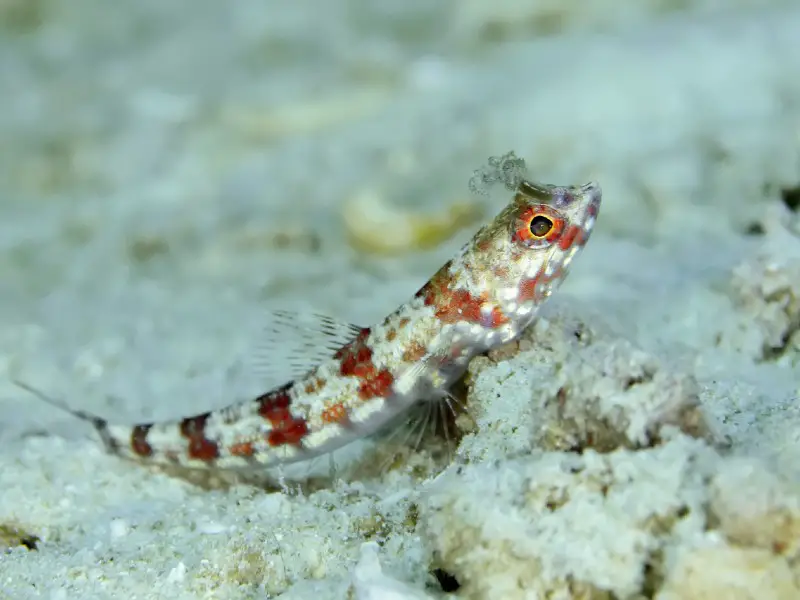
Earlier in this article, we explained how to differentiate the male from the female Dragon Goby. This is necessary for breeding purposes.
Group 2-3 females with only one male in the tank. The male will probably breed with all of the females in the tank on the same day, provided breeding conditions are ideal.
To create the best breeding conditions, reduce the amount of food given for a few days. Then start adding more live food, to increase the protein in their diet.
Once they are eating the high protein food, reduce the saline content to 1.004, and a day later increase it to 1.023. The sudden change will spark the breeding process.
Once the female dragon Gobies have laid their eggs, transfer the females to another tank. The male will guard the eggs until they hatch, which takes a few days.
Once the eggs have hatched, remove the male, and the babies will slowly start growing into healthy little Dragon Gobies.
Is the Dragon Goby Suitable For Your Aquarium?
Provided that all its needs are met, as laid out in our guidelines above, the Dragon Goby can be an interesting addition to a home aquarium.
If you already have some experience with keeping fish, and you are not afraid of a little extra work to ensure that your Dragon Goby stays healthy, then there is no reason not to have one in your aquarium.

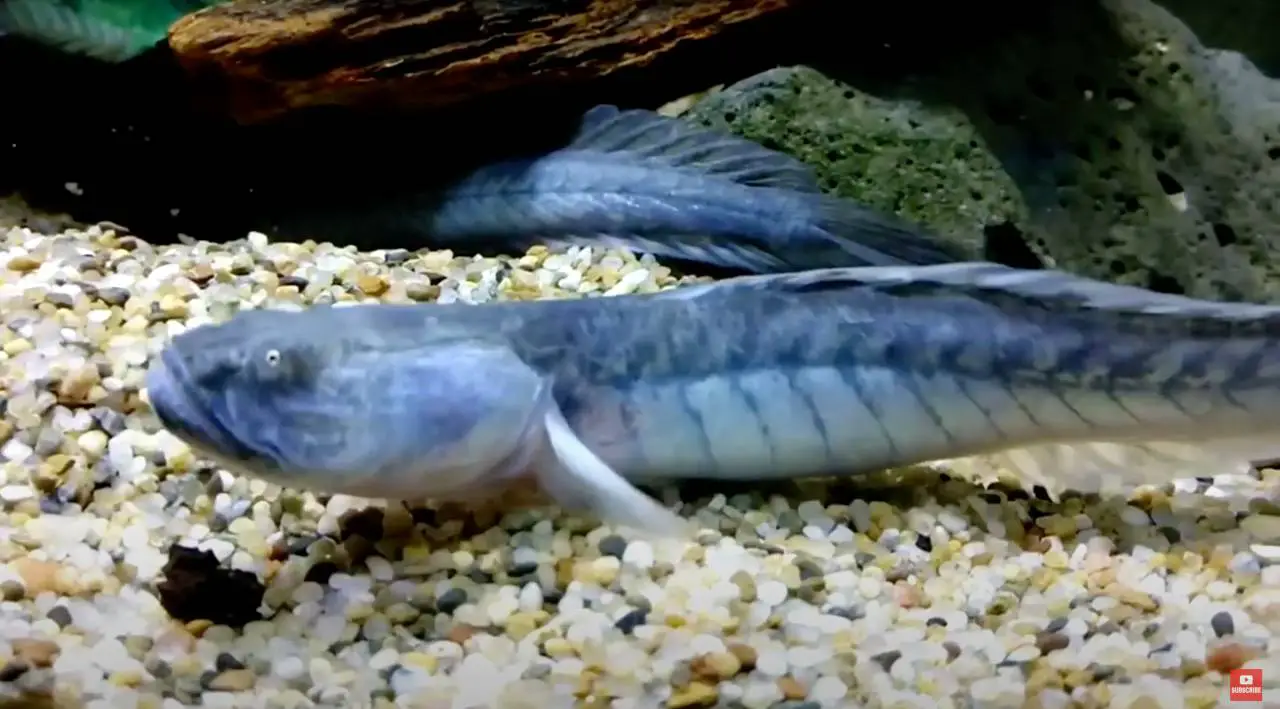
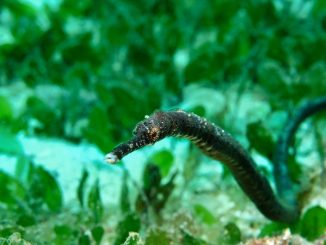

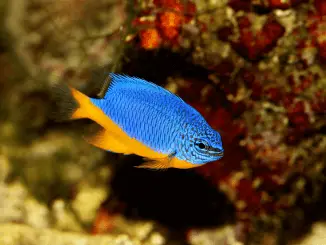
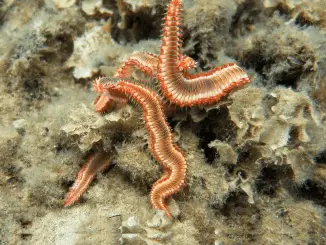
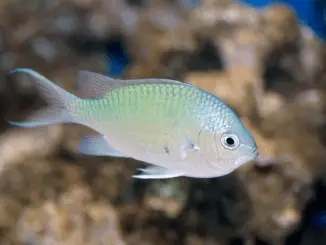
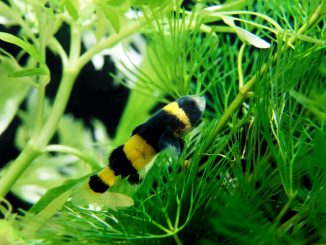
Be the first to comment